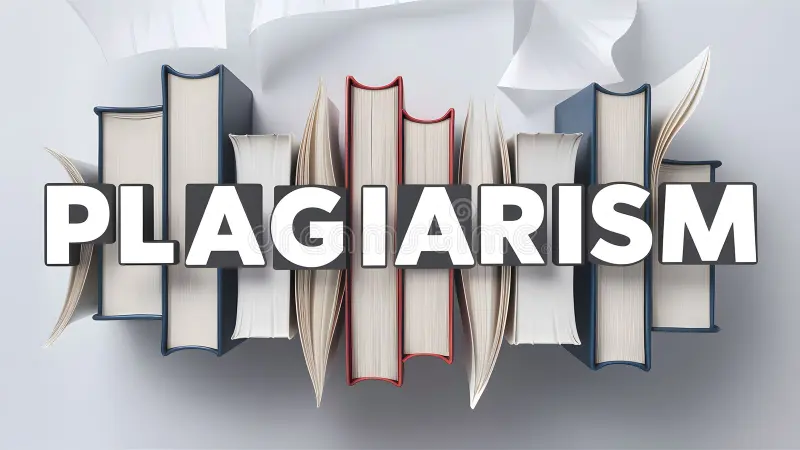Introduction to Digital Plagiarism
Plagiarism has become increasingly important in today’s digital era, creating a substantial obstacle for content creators, educators, and organizations. The rise in issues has led to the creation of technological solutions such as the AI Detector, offering a potential solution. These tools allow individuals and organizations to promptly identify and address plagiarism, ensuring the authenticity of content sharing in a highly connected world. In this age of technology, the ease of accessing vast amounts of information online makes it more and more alluring to copy the work of others instead of doing the work to produce something original. Nevertheless, the absence of uniqueness harms the person’s image and reduces the fundamental aspects of creativity and innovation in the online realm.
The Rising Challenge of Plagiarism Online
With its far-reaching resources and platforms, the internet has inadvertently facilitated the rise of plagiarism. As digital content proliferates, the chances of encountering works that have been copied without due attribution increase. Individuals are employing elaborate methods to bypass detection, posing a hefty challenge for institutions striving to maintain integrity. Recent statistics have shown a marked rise in plagiarism incidents within academic and professional domains, diminishing credibility and trust in online information.
To address this, strict rules must be enforced, and a deeper understanding of the value of original work must be cultivated. Stakeholders across various sectors must collaborate to combat this issue and create a more ethical digital environment for all users.
Strategies to Prevent Plagiarism
Preventing plagiarism starts with awareness and education, which play vital roles in shaping responsible behavior. Implementing a robust framework emphasizing originality’s importance can substantially reduce plagiarism cases. Key strategies include:
- Integrating plagiarism education in curricula from an early stage helps instill the significance of unique content creation.
- Establish clear guidelines and provide training sessions about correct citation and referencing techniques, ensuring individuals appropriately credit others.
- Rewarding and highlighting original contributions fosters motivation among individuals to create authentic content.
- Providing learners and employees with the necessary tools and resources that encourage independent thought and discourage copying.
When applied consistently, such proactive measures not only deter plagiarism but also cultivate a culture that esteems integrity and originality in content creation.
Utilizing Technology for Plagiarism Detection
Technology serves as a powerful ally in the battle against plagiarism, with innovations like AI transforming the landscape of plagiarism detection. Tools such as AI-driven detectors have become indispensable for maintaining content authenticity. According to insights, these technologies excel in rapidly analyzing vast quantities of content to spot similarities, thereby enhancing the efficiency of plagiarism detection efforts.
By employing such technology, educators, and professionals can concentrate more on fostering creativity and less on policing content. These tools are pivotal in maintaining the integrity of digital content, ensuring that only high-quality and original works are disseminated.
Promoting Originality and Creativity in Content Creation
Originality and creativity are the bedrock of innovative content creation, imperative for standing out in today’s saturated marketplace. Encouraging a culture that prioritizes creative thinking is essential to combat the temptation of plagiarism. Methods to nurture originality include:
- Conduct regular brainstorming sessions, during which individuals can freely share and develop ideas without fear of judgment.
- Employing mind mapping techniques allows individuals to visually organize their thoughts and explore new connections.
- Encouraging multidisciplinary collaboration, where diverse perspectives can lead to fresh and unique outcomes.
These techniques encourage a setting that values unique content while emphasizing its essential role in advancing progress and innovation in different sectors.
Tools and Resources for Maintaining Content Integrity
Various resources and tools are available to aid individuals and organizations in their quest to maintain content integrity. These resources serve different purposes, from checking for plagiarism to managing references efficiently:
- Built-in plagiarism detectors within writing platforms aid in the instantaneous detection of copied content.
- Subscription-based plagiarism checker tools provide more comprehensive scanning for larger-scale needs.
- Numerous guides and lists, like those on Education World, offer curated recommendations of reliable plagiarism checkers suited to different contexts and requirements.
By leveraging the right tools, creators can ensure their works are original, build trust with their audiences, and maintain the integrity of their brand or academic standing.
Legal and Ethical Considerations
Beyond the technical aspects, plagiarism carries severe legal and ethical implications. Engaging in plagiarism can lead to significant consequences, including lawsuits, academic penalties, and reputational damage. Content creators must understand these risks and ensure that all content they create is not only original but also properly credits any sources or inspirations.
Upholding ethical standards in content creation fosters a fair and just environment where unethical practices do not stifle innovation. By prioritizing originality and moral behavior, content creators contribute to a robust and trustworthy digital ecosystem that benefits everyone.
Conclusion and Future Outlook
While plagiarism presents an ongoing challenge, numerous strategies and tools are available to counteract its effects. By combining the power of technology with a commitment to education and ethical practices, creators can safeguard the authenticity of their content. As new tools and strategies evolve, there is optimism for a digital future where originality and trust become the norms, not the exceptions.
By embracing these practices, the integrity of individual creators and the broader digital community will ultimately be upheld, contributing to a more credible and innovative world.
